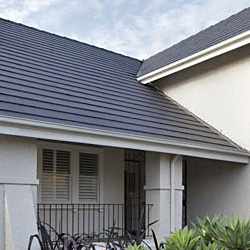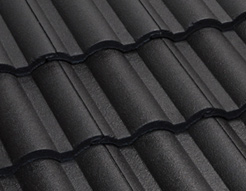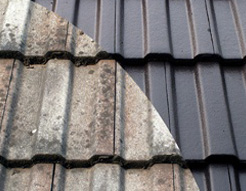The Different Extension Roof Types June 30, 2022

If you are extending your home, you need to understand that roof shapes and sizes vary in a lot of ways. And factors like your home structure and local planning rules and regulations influence the shape and type of roof that you are allowed to install for your home extension. In this blog, we listed the different extension roof types to guide you in your roof extension selection.
Gable Roof
One of the simplest styles when it comes to extension roofs, the gable roof has an inverted “V” shape feature. And like any other type of roof extension, it can withstand any weather conditions, especially rain and snow. However, if your location is prone to high winds like if your property is situated on high land, you must weigh your options carefully because this type of roof is susceptible to strong winds. If a gable roof is your top choice, you also must double-check the existing roof regulations in your area to avoid running into difficulty concerning roof planning permission. Overall, this type of roof extension is very low maintenance.
Hipped Roof
A hipped roof has downward slope features on all four sides of the roof which resembles a pyramid. They are mostly chosen for houses with square and rectangular designs. This type of roof extension is perfect for handling high winds and strong storms since they are very sturdy and reliable.
Flat Roof
With a little incline for water runoff, a flat roof extension does not have a fully flat surface. This is the major drawback of this type of roof extension, the possible accumulation of water and the required maintenance and upkeep in the long run. Thus, you will have to deal with potential roof leaks in the future. However, flat roof extensions are a good choice for homeowners. Especially for those homeowners with budget constraints. Since this extension roof type is easier to build and maintain.
Skillion Roof
They almost resemble a flat roof but with more pitch. This type of roof extension is most popularly used in many homes in Melbourne and the whole of Australia. They offer a lot of advantages and are a lot cheaper and easier to construct compared to some roof extension types. Unlike the flat roof extension type, you won’t have to worry about water run-off and accumulation.
Gambrel Roof
Also called “barn roofs”, this type of roof is ideal for barns and agricultural structures since they are not suitable for areas with heavy winds. But they are suitable for huge living spaces and provide more room for loft and attic space.
Mansard Roof
It is a four-sided gambrel roof and a cross between a gable roof and a hipped roof. It is a popular option for those homeowners who would like to maximise their interior space.Nevertheless, this type of roof extension requires a professional roof installer since the building process is more tricky and more complex to construct. But the big upshot of this roof type is they are a type of extension itself which you can add another storey.
If you are looking for a reliable roofing specialist that you can trust when it comes to your roofing needs, call us at Ajax Gregson Tiles and our professional re-roofing specialists will be happy to assist you.
Ajax Gregson TIles
PO BOX 79, MOUNT EVELYN VIC 3796 ( Temporary )
Phone:
Glen’s Mobile 0419 546 699
Mel’s Mobile 0403 486 772
Email: ajaxtiles@bigpond.com.au
Optimized by NetwizardSEO.com.au
Recent posts
- Melbourne's Trusted Roof Tile Repair Specialists: Restoring Rooftop Elegance
- Free Roof Inspections: A Legitimate Service or a Marketing Ploy?
- Concrete Roof Tiles: How Innovation Has Improved an Age-Old Product
- The Comeback of French Terracotta Roof Tiles in Contemporary Buildings
- Tile Roofing Installation for Maximum Bushfire Protection: Expert Tips
- Roof Tile Repainting: Achieve a Stunning New Look with Ajax Gregson Roofing
- Roof Tile Colours by Ajax Gregson Tiles' Colour Studio
- Residential Roof Tile Supplier: Ajax Gregson is Your Partner for Reliable Roofing Solutions
- Tile Re-roofing Experts: What to Expect from Ajax Gregson Roofing
- Tile Roofing Installation by Ajax Gregson: Superior Protection Against Harsh Weather Conditions
- Tile Roofing Solutions Made Easy: Connect with Ajax Gregson Roofing
- Tile Roof Lifespan: Debunking Myths and Setting Realistic Expectations
- Tile Roofing Specialists: Hire Ajax Gregson for All Your Roofing Needs
Posts 2023
- Roof Tile Installation from Ajax Gregson Tiles: Perfect for Summer Renovation Projects
- Linea Tile Roofing: Stylish Design Options for Melbourne Homes
- View all articles…
Posts 2022
- Benbefits of New Tile Roof Installation You Don't Want to Miss
- Roofing Products: The Beauty Praised by Roofing Contractors
- View all articles…
Posts 2021
- The Benefits of Using Flexi Point Paint for Your Roofing Needs
- Five Reasons Why You Should Never Delay Your Reroofing Project
- View all articles…
Posts 2020
- Colour Studio: How to Choose the Right Roof Colour for Overall Home Appeal
- How to Keep Your Concrete Roofing Algae and Mould-Free
- View all articles…
Posts 2019
- Linea Concrete Roof Tiles: A Cost-Effective Alternative for the Traditional Slate Shingles
- Terracotta Roof Tiles: External Colours that Complement Your Melbourne Home's Overall Design
- View all articles…
Posts 2018
- Slimline Designs: Why Opt to Choose It for Your Roof?
- Why Do Tile Roofs Fail? What are the Best Remedies?
- View all articles…
Posts 2017
- The Right Roofing Material is A Vital Part of Your Home Extension
- How Well Do Terracotta Roof Tiles Respond to Different Weather Conditions?
- View all articles…
Posts 2016
- Are Concrete Roof Tiles Fireproof?
- Why Should You Consider Using Roof Tiles than Asphalt Shingles?
- View all articles…
Posts 2015
- Re-roofing Advantages and When Should You Get Rid Of Your Old Roof Tiles?
- Differences between Tile Roofs and Shingle Roofs: Reasons Why Tile Roofs Are Better
- View all articles…


